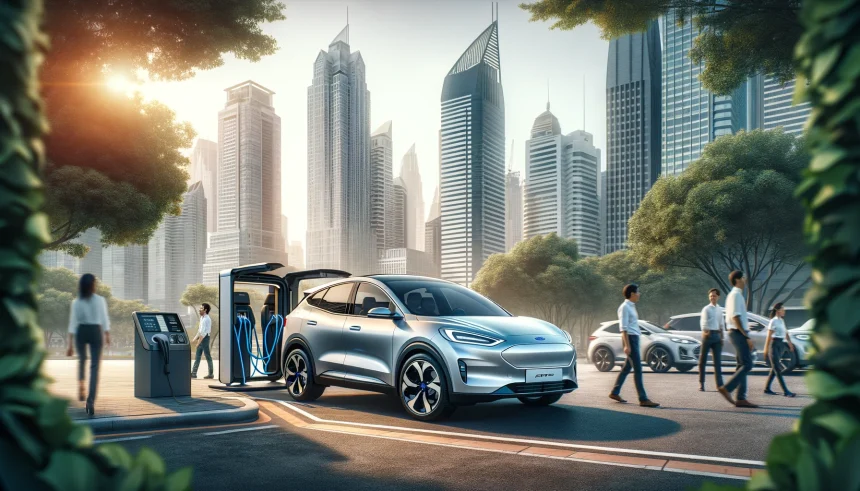Ford is embarking on a strategic shift in its approach to electric vehicles (EVs). Traditionally known for its large trucks and SUVs, the automaker aims to pivot towards smaller, more affordable EVs. CEO Jim Farley articulated this change during the company’s second-quarter earnings call, highlighting the potential profitability and consumer appeal of compact EVs. This strategy reflects Ford’s response to the growing trend of rising vehicle weights, which have increased significantly since the 1980s.
Shift to Smaller EVs
In past discussions about vehicle trends, data indicated that the average weight of new vehicles sold in the U.S. had surged to 4,329 pounds by 2022. This increase in vehicle size has driven up manufacturing costs, particularly for larger EVs that require more substantial batteries. For Ford, this shift to smaller EVs is a strategic response to these financial pressures, aiming to produce more cost-efficient and energy-efficient models. Historically, larger vehicles have generated higher profit margins due to their conventional internal combustion engines (ICE).
Ford’s current mid-sized EV offerings include models like the Mustang Mach-E SUV and the F-150 Lightning. These vehicles, although successful, come with high price tags and significant weights, factors that Farley believes could be barriers to broader EV adoption. “We believe smaller, more affordable vehicles are the way to go for EV in volume,” he commented, suggesting that compact EVs could attract a more extensive customer base.
Financial Implications
The company’s quarterly report revealed an EV division loss of $1.14 billion between April and June, underscoring the urgency for a new approach. Despite generating $47.8 billion in revenue from its gasoline-powered vehicles, the financial strain from larger EVs has prompted Ford to reconsider its future product lineup. Farley pointed out that larger EVs are financially unsustainable, with battery costs alone reaching $50,000 for models like Ford’s Super Duty.
Farley also reassured potential buyers that smaller EVs would not compromise on space, emphasizing their roomier interiors due to the absence of traditional engines and drivetrains. “We have to start to get back in love with smaller vehicles, it’s super important for our society and EV adoption,” he stated. Ford’s pivot to smaller EVs is also aimed at competing with emerging affordable models from rivals like Tesla and BYD.
Jim Farley’s advocacy for smaller EVs represents a strategic shift that could reshape Ford’s position in the market. By focusing on affordability and efficiency, Ford aims to make electric vehicles more accessible to a broader audience. This approach addresses both economic and environmental concerns, offering a path to sustainable profitability. As the EV market continues to evolve, Ford’s decision to prioritize smaller models could set a significant precedent for other automakers grappling with similar challenges. Shifting to smaller, more affordable EVs not only helps in reducing production costs but also aligns with the increasing consumer demand for economical and environmentally friendly transportation options.










